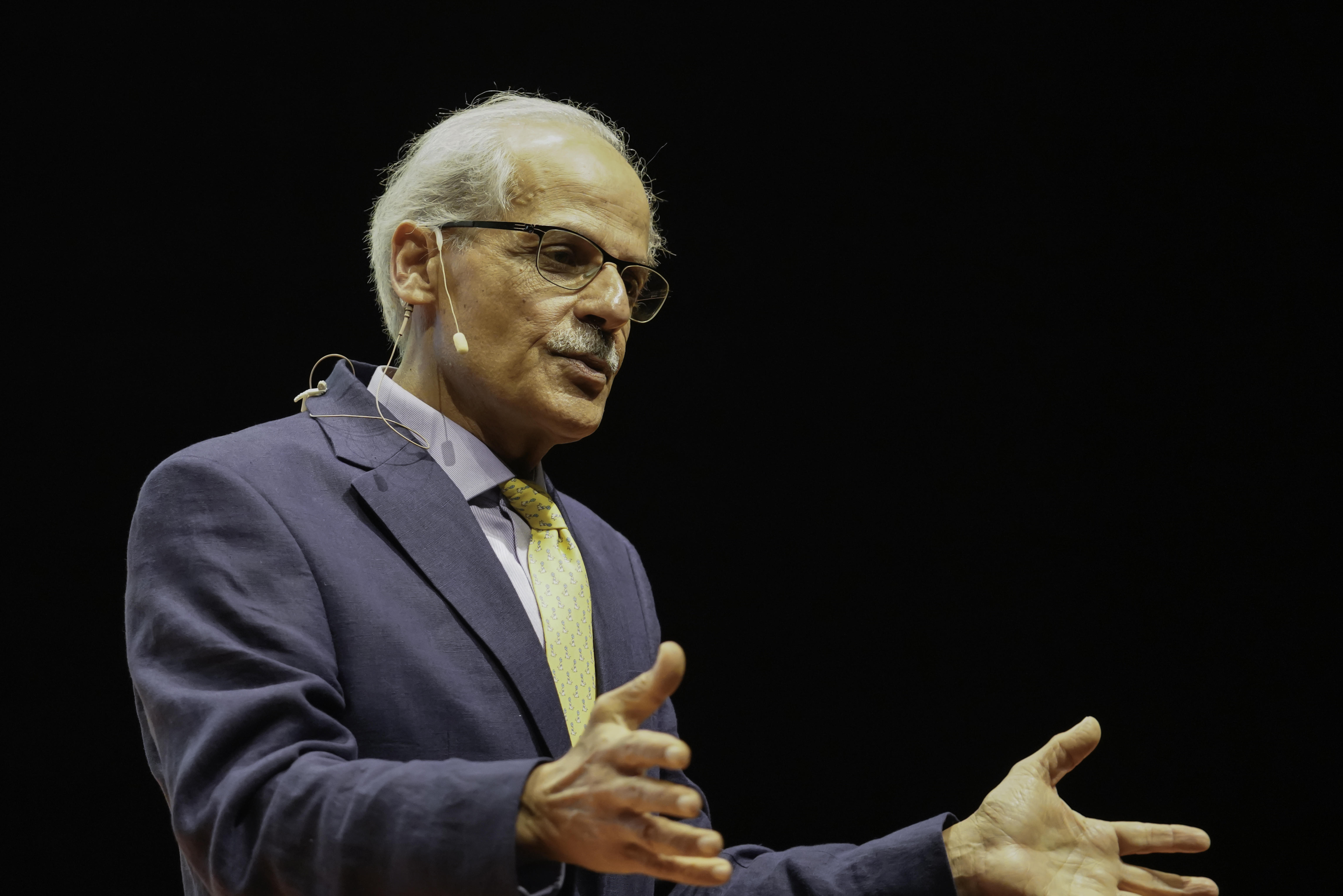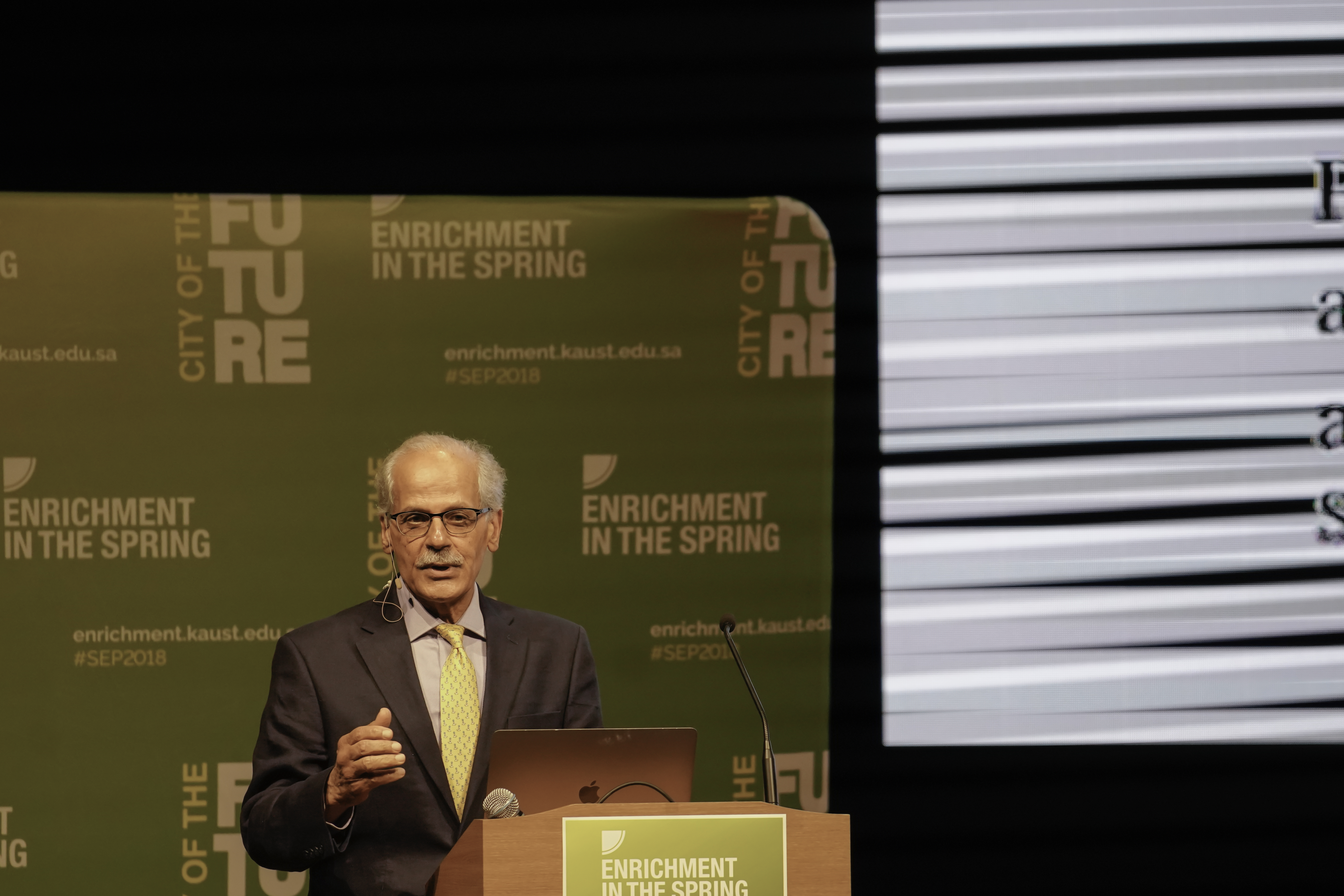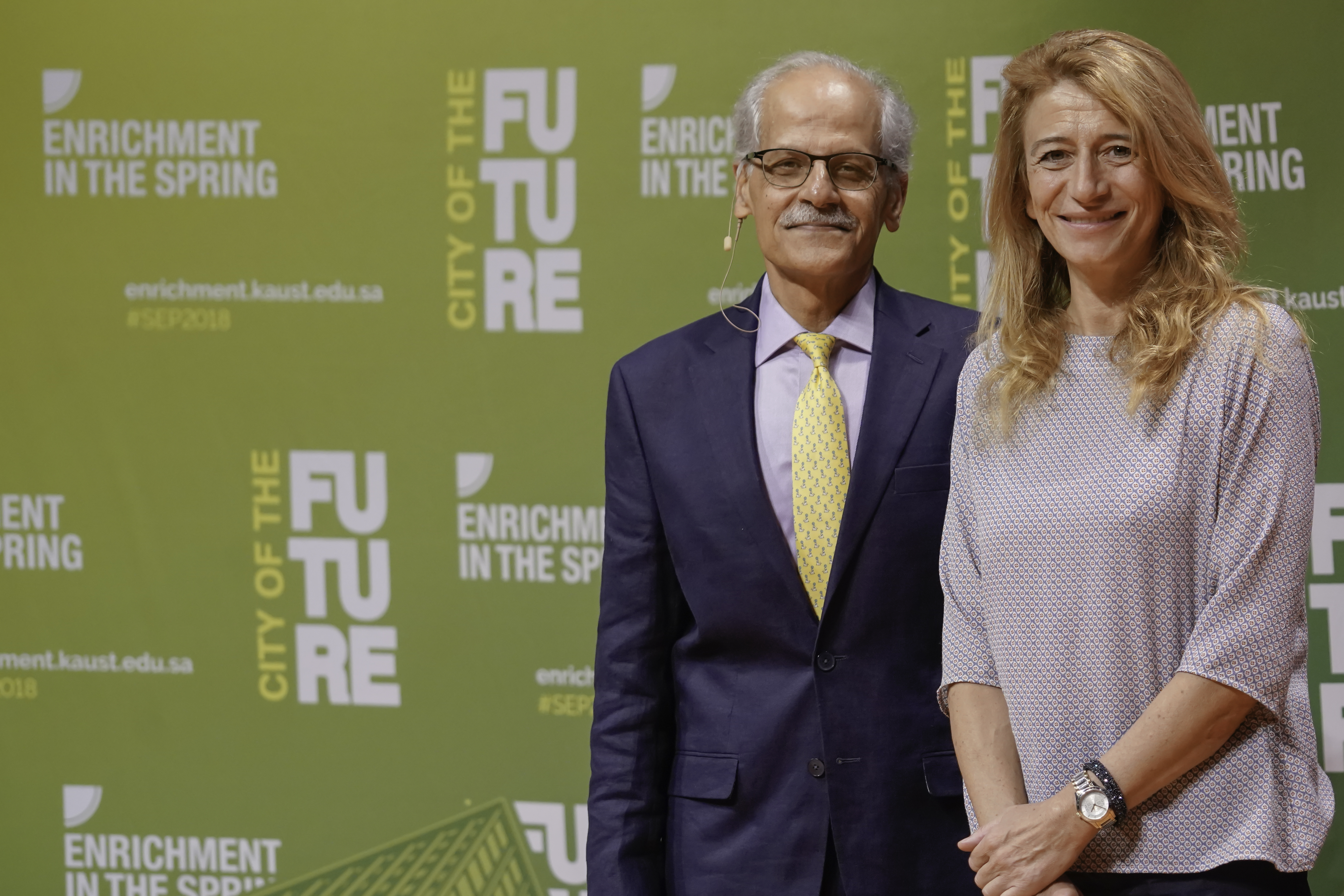Pillars of the future

MIT Professor Ahmed F. Ghoniem discusses the dream of a city built on renewable energy and the University’s potential role in its realization during the recent Spring Enrichment Program. File photo.
- By Andrea Hulsbosch, KAUST News
The dream of a city built on renewable energy intrigues many, and as the energy transition continues, and more renewables are connected to the grid, higher efficiencies are being realized. This transition also requires technologies for energy storage, mobility and fuel sources. Combining these trends into future applications is beneficial for the environment as well as the economy, but how will they be integrated?
Ahmed F. Ghoniem, director of the Center for Energy and Propulsion Research and the Reacting Gas Dynamics Laboratory at Massachusetts Institute of Technology (MIT), expanded on this year's Spring Enrichment Program theme of "City of the Future" as he delved into his Enrichment keynote entitled "Energy for the (MegaCity of the) Future; Technology and Research Opportunities."
Ghoniem is a world-renowned leader in computational engineering, turbulence and combustion, multiphase flow, clean energy technologies with a focus on CO2 capture and renewable energy and fuels. Ghoniem is no stranger to the Kingdom or to KAUST—he has led several projects with Saudi industry and universities, including projects at KAUST.

MIT Professor Ahmed F. Ghoniem gives his keynote lecture entitled "Energy for the (MegaCity of the) Future; Technology and Research Opportunities" during the recent on campus Spring Enrichment Program. File photo.
A portfolio of solutions
"It is my strong belief that clean energy, as defined by a portfolio of solutions, contains an enormous opportunity for the city of the future—particularly if you combine the deployment of the technology with the research and development needed, as well as job creation for scaling these technologies," said Ghoniem. "A portfolio of solutions can address the clean energy needs of the City of the Future and offer significant economic opportunities."
During his address, Ghoniem discussed several technologies and engineering research, mostly dual-use concepts that offer solutions for a wide variety of applications and industries. Ghoniem believes that an orderly energy transition calls for a portfolio of solutions.
Some promising options to store renewable energy in a chemical form are electrochemical, solar thermochemical and plasma technology. Technologies that allow some level of independence, local generation and storage and continuous consumption of energy will play an important role in integrating renewables more effectively in the energy grid.
While he was at KAUST, Ghoniem also sat down for an interview with KAUST Live.
In the near term—according to Ghoniem—fossil hybrids, which improve efficiency and integrate renewables, will remain strong. In the intermediate term, we will see an expansion of carbon capture utilization and storage and nuclear energy, as well as significant penetration of renewables. In the long term, advanced nuclear energy and renewables are likely to reach their full potential and dominate energy markets the world over.
"The city of the future should be a good citizen of the world. In other words, it should engage in the world's concerns and suggest solutions for different scenarios. Therefore, the city of the future should definitely have a low carbon footprint," Ghoniem said.
Ghoniem believes global warming and CO2 are driving us to think differently. When looking at new greenfield-like developments, one is forced to think along with three approaches: efficiency improvement, new and clean energy and carbon sequestration. Together, these solutions will help mitigate the effects of CO2. Ghoniem also emphasized the importance of developing an economy around the growing market of clean energy and the need to think about green energy as an economic opportunity.

MIT Professor Ahmed F. Ghoniem, a keynote speaker during the University's recent Spring Enrichment Program, stands with Marie-Laure Boulot, KAUST manager of Enrichment Programs, after his presentation. File photo.
"The city of the future should not only be a consumer of renewable energy and technology but also a producer," he noted.
Energy is everywhere in the city of the future. Fossil fuels will remain important for a long time to come. However, researchers can make a significant difference using innovative solutions like carbon capture, reuse and storage. For example, scientists try to close the carbon cycle by capturing exhaust gases like CO2 and turning them back into hydrocarbon-containing chemicals and fuels.
"The city of the future should be strongly people-oriented. Focusing on a knowledge-based economy is a must. Energy, water, food and jobs form an important nexus," said Ghoniem. "It must be as independent and resilient as possible. The city of the future combines local knowledge development with an enterprising spirit."
Related stories:
- A safer nuclear future
- The dawn of a grassroots renaissance
- From mobility to movability
-
Visualizing the future

